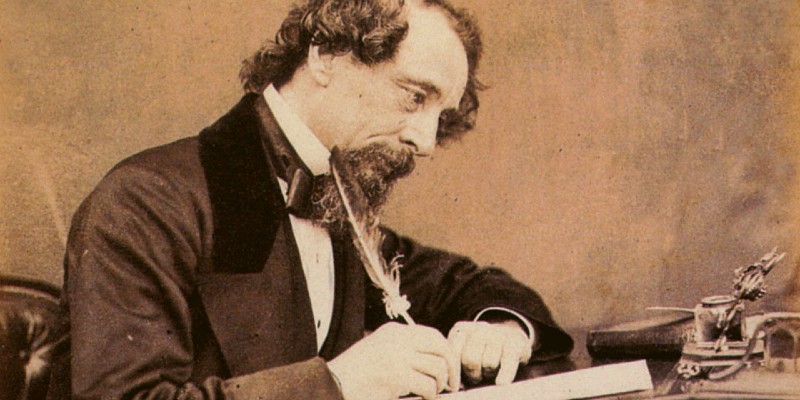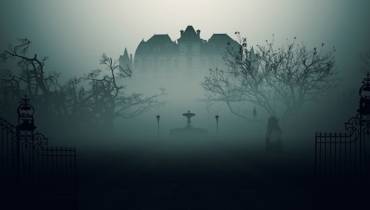What Is Your Writing Style? Do You Even Have One?
![What Is Your Writing Style? Do You Even Have One? [node:title]](/sites/default/files/styles/large/public/type-writer-style.jpg?itok=i41lx-rA)
Do you have style—writing style?
Writing style is the distinctive manner in which a writer puts words together or organizes words. It is how your work is written as opposed to the meaning of what is written; a sum of sentence structure, literary perspectives, cultural allusions, and world view that gives you a distinctive “voice,” which distinguishes your writing.
Writing style is simply a reflection of your thinking and speaking habits aligned with your delivery technique. So, what is your writing style? Do you even have style? Why do you need style anyway?
Style Matters
Good writing style is essential in all writing genres. You won’t communicate effectively or get published online or in print without good style.
It is important, however, to realize that style is subjective. Different audiences and publishers have different ideas about what constitutes good writing style and, therefore, prefer one style over another.
Some publishers such as newspaper publishers prefer writers to stick strictly to facts, while other publishers like fiction publishers give writers room to digress. Generally, though, mastery of good style indicates clarity, accuracy and precision in your writing.
Good style can reflect your personality, such as friendly, serious, chatty or brusque. Some writers write in short staccato sentences that reflect an aspect of their personality like shy while others write in longer, complex sentences that allude to an aspect of their personality like sophisticated.
Of course, you can write in a way that is different from your personality. Many writers don’t write as they speak. In fact, many writers are introverted and people of few spoken words, but they have more than a few words to write when they get down to it.
Why You Should Develop Your Own Writing Style
As a writer, you need to develop good style and be willing and able to vary your style to suit different ends, subjects, and publication style guides in order for you to succeed in any genre. For example, if you aspire to break into writing articles for newspapers and magazines you will need to adapt your style and keep your writing strictly factual and to the point.
On the other hand, if you aspire to be a successful fiction writer of longer pieces like novels, you’ll find your audience and publishers expect you to use words liberally to convey your message in the best and most descriptive way possible.
In other words, the type of project you have on hand, the target audience and the message you want to pass across will determine whether you have room for flowery writing or not.
Many writers have developed writing styles that inspire others to develop their own distinctive styles. In fact, some of the best writers in history gave us such exemplary writing styles that adjectives have been coined from their names to describe their styles.
3 Exemplary Writing Styles from Top Authors

Photo: Charles Dickens writing.
Among top writers in history who created exemplary writing styles that we can examine to get a feel for what good style can be are Charles Dickens, George Orwell, and Jonathan Swift:
I. Charles Dickens and the Dickensian style
Charles Dickens (1812-1870) was a remarkable writer who gave us the Dickensian style, a rhythmic style meant to be read out loud. Not only are his Great Expectations newspaper columns habitually assigned as study material in higher institutions of learning, but also his novels still make for good reading today. Many people like Dickens's biographer Claire Tomalin regard Dickens as the greatest creator of character in English fiction after Shakespeare.
Dickens loved words and used a lot of adjectives in his writing. His similes and metaphors give vivid mental images of people, their surroundings and even the weather in beautiful ways that reinforce each other. His seemingly whimsical and zany characters with delightfully outrageous names like Micawber, Pecksniff and Miss Havisham are powerful and memorable. The Dickensian style engrosses with its memorable descriptions and characters, burning resentment for institutionalized social inequities and sympathy for the poor and marginalized in society.
II. George Orwell and the Orwellian style
Eric Arthur Blair (1903-1950), better known by his pen name George Orwell, was an English journalist, poet and novelist who is considered one of the best English culture chroniclers of the 20th Century. He wrote fiction, poetry, literary criticism and polemical journalism that left an indelible mark of excellence in the writing world. His satirical fiction is considered some of the sharpest in the 20th century with timeless classics like Animal Farm and Nineteen Eighty-Four.
George Orwell was a man of strong opinions and his personality shone through in his writing style. He did not shy away from giving his opinions on weighty matters regarding major political movements of his time, including fascism, imperialism and communism. His style is deceptively objective. It is defined by an acute awareness of social injustice, belief in democratic socialism and opposition to totalitarianism.
The Orwellian style insists on clear writing that employs shorter, stronger and more descriptive language to persuade readers to the writer’s point of view. Orwell's classic essay, Politics and the English Language demonstrates how to employ shorter, stronger and more effective language in writing. At the end of the essay, Orwell sums up with his five rules for effective writing that every writer interested in writing with clarity, wit and intelligence should internalize.
III. Jonathan Swift and the Swiftian style
Jonathan Swift (1667-1745) was an essayist, poet, satirist and political pamphleteer. He is best remembered for works such as A Modest Proposal, Gulliver’s Travels and Drapier's Letters. T.S. Eliot in The Varieties of Metaphysical Poetry, 1926 describes Swift as “…the greatest man who has ever written great English prose.”
The Swiftian style has a journalistic “feel” to it and has many references to bodily functions, such as the account of Gulliver extinguishing a fire with a stream of urine. A Modest Proposal reads like a newspaper article with the sort of short, clear sentences and statistics found in journalese.
Jonathan Swift identified clarity, directness, and freshness of expression as the chief qualities of a good style in his 1721 essay Letter to a Young Gentleman Lately Entered Into Holy Orders. The English poet, literary critic and philosopher Samuel Coleridge in the Lecture on Style, 1818 says:
“Swift's style is, in its line, perfect; the manner is a complete expression of the matter, the terms appropriate, and the artifice concealed. It is simplicity in the true sense of the word.”
Tips to Develop Your Own Style

To develop and improve your own writing style, read and write more. Writing (like other crafts) needs to be practiced and nurtured to bear the desired fruits.
Be self-critical about your writing if you are serious about developing your own distinct style.
1. Check your flow
Read your words out loud or get someone else to read your work out to you so you hear how your work flows. This strategy can help you write like a human. Ask yourself some basic questions: Do my sentences flow nicely?
Do I have variety in sentence length and structure? Are there any obvious repetitions or awkward phrases in my work? Correct all problems to improve your flow.
2. Check your tone
Tone is the way in which a writer expresses his attitude regarding a subject. It is what the writer feels about the subject. Tone not only reveals your attitude towards your subject, but also your unique personality. Tone can be angry, bitter, breezy, arrogant, informal, sarcastic, ironic or cynical. Remember the admonition when you were young:
"Don’t use that tone of voice with me Missy (or Mister)!”
Your tone should be appropriate for your audience and the purpose for which you are writing. Ask yourself a few basic questions to determine the most appropriate tone for your audience and subject.
Why am I writing this? Who am I writing this to? What do I want the reader to pick or learn from this? Answer the questions and adjust your tone well to deliver your message appropriately and effectively.
3. Check your rhythm
Rhythm in writing is analogous to symphony in music. Good rhythm is like a perfect symphony orchestra where all the different instruments in the orchestra blend together beautifully to create sweet, soothing and enjoyable music.
Bad rhythm is like an orchestra gone wild where every instrument is jostling for the spotlight and the music conductor seems to have called in sick. The resultant sound is not music, but noise. Any person still left in the orchestra eventually, inevitably finds himself screaming for ear plugs to block out the noisy commotion.
Stand back dispassionately and look at your sentence structure. Have you varied your sentence length? What choice of words have you used? How do the words sound? What feeling does the resultant rhythm evoke? Is it good, soothing "music" or one big, noisy "orchestra" gone wild?
Mix up one-word sentences and longer, complex sentences with a couple of exclamations or questions deliberately to embroider your work with beautiful, elaborate rhythm. Examine how exemplary and famous writers who write with rhythm and style do it.
Make a mental note and practice writing with rhythm and style in your own writing. Don't be afraid to write and rewrite and rewrite some more to improve on quality and achieve your desired rhythmic effect. Good writers rewrite many times over to improve their art, enhance reader engagement and strike a beautiful, harmonious balance in the final note of a complex “concerto.”
Conclusion
Jonathan Swift once said that good writing style is "proper words in proper places." Your style should be proper. It should have the right words placed in the right places and make your meaning distinctively clear. That, for us, is good style.
What’s your writing style?
Updated August 1, 20024.



















